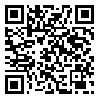Volume 12, Issue 4 (Volume 12, No 4 2022)
jdc 2022, 12(4): 243-255 |
Back to browse issues page
Download citation:
BibTeX | RIS | EndNote | Medlars | ProCite | Reference Manager | RefWorks
Send citation to:



BibTeX | RIS | EndNote | Medlars | ProCite | Reference Manager | RefWorks
Send citation to:
Golshani S, Hosseinhashemi Z, Zarshenas M. A review on the place of Khadab in the history of Iranian civilization and its role in Iranian medicine. jdc 2022; 12 (4) :243-255
URL: http://jdc.tums.ac.ir/article-1-5563-en.html
URL: http://jdc.tums.ac.ir/article-1-5563-en.html
1- School of Persian Medicine, Shahid Sadoughi University of Medical Sciences, Yazd, Iran
2- Department of History, University of Isfahan, Isfahan, Iran
3- Department of Traditional Pharmacy, School of Pharmacy, Shiraz University of Medical Sciences, Shiraz, Iran * Epilepsy Research Center, Shiraz University of Medical Sciences, Shiraz, Iran ,mmzarshenas@gmail.com
2- Department of History, University of Isfahan, Isfahan, Iran
3- Department of Traditional Pharmacy, School of Pharmacy, Shiraz University of Medical Sciences, Shiraz, Iran * Epilepsy Research Center, Shiraz University of Medical Sciences, Shiraz, Iran ,
Abstract: (1802 Views)
Khadab is one of the most important solutions used to beautify and strengthen hair, and Khadab has been used for a long time throughout history. Moreover, putting Khadab has been a long- lasting tradition in the course of history. Also, Iranian medical sources pointed out to the herbs used in Khadab and its role in human health. In this regard, the present study examines Khadab and its place in the history of Islamic civilization.
This is a desk study which is conducted through reviewing the main sources, Hadiths, and written sources of Iranian medicine. Also, various databases such as Magiran, SID, Google Scholar were searched to reach new findings. What is important in this study is putting Khadab during the course of history for adornment and human health. Moreover, diseases were cured through putting Khadab.
Putting Khadab and promoting this act can be effective in improving mental and physical health. Therefore, putting Khadab and its effect on the health of the human body and the herbs used in it need further investigation, as this research can be used to enhance the knowledge of the experts of traditional medicine.
Type of Study: Review |
Subject:
Special
Received: 2022/03/17 | Accepted: 2022/02/4 | Published: 2022/02/4
Received: 2022/03/17 | Accepted: 2022/02/4 | Published: 2022/02/4
Send email to the article author
| Rights and permissions | |
 |
This work is licensed under a Creative Commons Attribution-NonCommercial 4.0 International License. |





